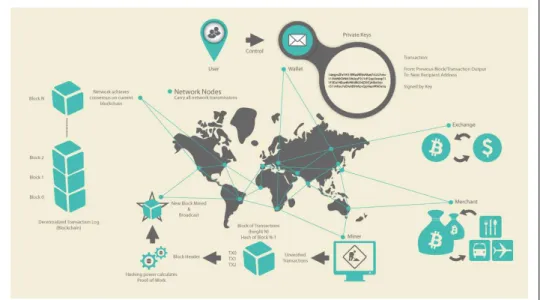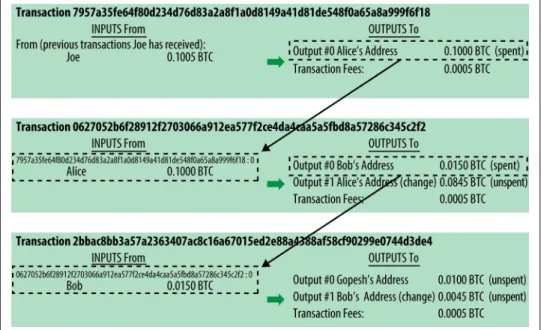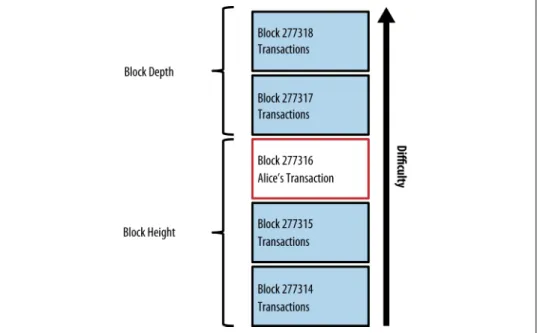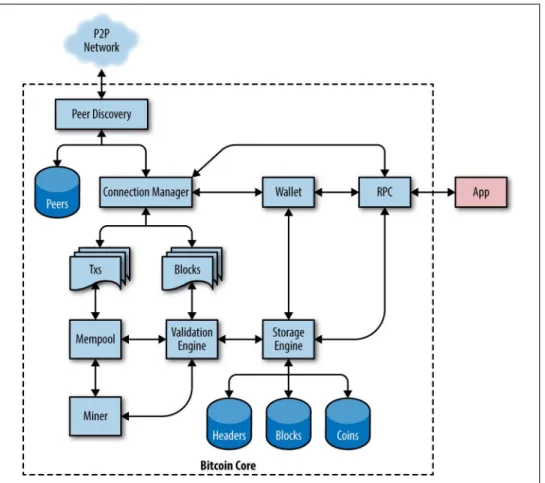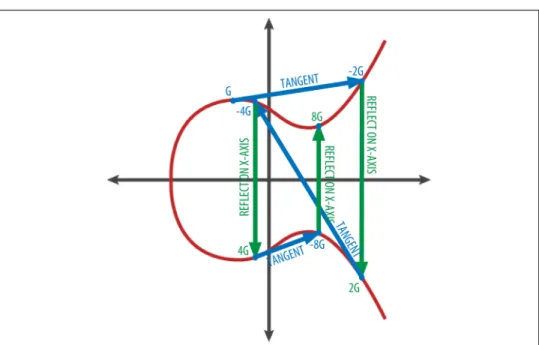Mastering Bitcoin, the cover image and related trade dress are trademarks of O'Reilly Media, Inc. Use of the information and instructions contained in this work is at your own risk.
Preface
Writing the Bitcoin Book
Intended Audience
Why Are There Bugs on the Cover?
Conventions Used in This Book
Code Examples
Using Code Examples
Bitcoin Addresses and Transactions in This Book
O’Reilly Safari
How to Contact Us
Contacting the Author
Acknowledgments
Special thanks to Richard Kagan and Tymon Mattoszko, who reviewed early versions of the proposal, and Matthew Taylor, who copyedited the proposal. Thanks to Cricket Liu, author of the O'Reilly title DNS and BIND, who introduced me to O'Reilly.
Early Release Draft (GitHub Contributions)
Thanks to Amir Taaki and Eric Voskuil, for example code snippets and lots of great comments; Chris Kleeschulte for his contribution to the Bitcore appendix;. In the second edition I again received a lot of help from many Bitcoin Core developers, including Eric Lombrozo who demysti‐.
Quick Glossary
The Open Assets protocol is a simple and powerful protocol built on top of the bitcoin blockchain. A micropayment channel or payment channel is a class of techniques designed to allow users to perform multiple bitcoin transactions without committing all transactions on the bitcoin blockchain.
Introduction
What Is Bitcoin?
Behind the scenes, bitcoin is also the name of the protocol, a peer-to-peer network and a distributed computing innovation. In the following chapters, we begin to unpack the technological layers that make bitcoin possible and examine the inner workings of the bitcoin network and protocol.
Digital Currencies Before Bitcoin
History of Bitcoin
A Solution to a Distributed Computing Problem
Bitcoin Uses, Users, and Their Stories
This story will show how bitcoin can be used for large international business-to-business payments related to physical goods. This story will examine the "industrial" basis of bitcoin: the specialized equipment used to secure the bitcoin network and issue the new currency.
Getting Started
He is trying to use bitcoin to buy electronics from the United States and China for import into the UAE to speed up. Each of these stories is based on the real people and real industries that are currently using bitcoin to create new markets, new industries and innovative solutions for global eco-
Choosing a Bitcoin Wallet
Web wallets are accessed through a web browser and store the user's wallet on a server owned by a third party. A full client, or "full node," is a client that stores all bitcoin transaction history (every transaction by every user, ever), manages user wallets, and can initiate transactions directly on the bitcoin network.
Quick Start
Alice can copy the bitcoin address or QR code to her clipboard by pressing the QR code or Receive button. At this point, her bitcoin address is not known to the bitcoin network or "registered" with any part of the bitcoin system.
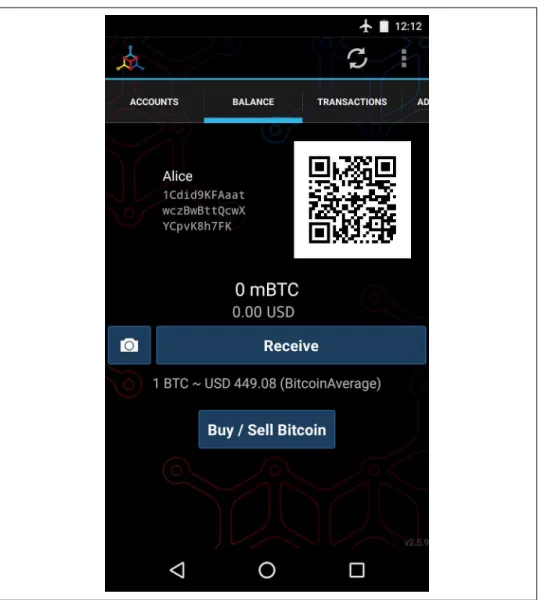
Getting Your First Bitcoin
In fact, in most wallets, there is no connection between the bitcoin address and any externally identifiable information, including the user's identity. By the time this address is referenced as the recipient of value in a transaction posted to the bitcoin ledger, the bitcoin address is simply part of the large number of possible addresses that are valid in bitcoin.
Finding the Current Price of Bitcoin
One of the advantages of bitcoin over other payment systems is that, when used properly, it provides users with much more privacy. For example, the "price" of bitcoin in US dollars is calculated in each market based on the recent trading of bitcoin and US dollars.
Sending and Receiving Bitcoin
This tells the Bitcoin network that Joe has authorized a value transfer to Alice's new address. Within a second, most of the well-connected nodes in the network receive the transaction and see Alice's address for the first time.
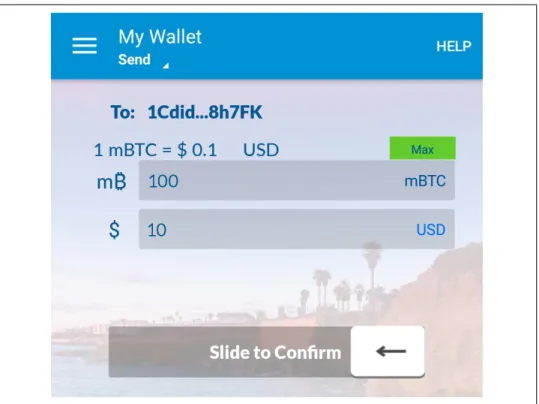
Conirmations
How Bitcoin Works
Transactions, Blocks, Mining, and the Blockchain
Bitcoin Overview
Each of these has a search function that can take a bitcoin address, transaction hash, block number or block hash and retrieve corresponding information from the bit-. With each transaction or block example, we provide a URL so you can look it up yourself and study it in detail.
Buying a Cup of Cofee
Bob's POS system will also automatically generate a special QR code containing a payment request (see Figure 2-2). Her smartphone shows a payment of 0.0150 BTC to Bob's Cafe and she selects Send to authorize the payment.

Bitcoin Transactions
Within seconds (about as long as a credit card authorization), Bob sees the transaction at the register and completes the transaction. We will see how Alice's wallet produced it, how it spread across the network, how it was verified, and finally how Bob can spend this amount in subsequent transactions.
Transaction Inputs and Outputs
In this book, we will use the term “bitcoin” to refer to any amount of bitcoin currency, from the smallest unit (1 satoshi) to the total number of all bitcoins ever mined.
Transaction Chains
Making Change
An input is a reference to the output of a previous transaction and shows where the value comes from. A transaction output sends a specific value to a new owner's bitcoin address and can include a change output to the original owner.
Common Transaction Forms
The results from one transaction can be used as inputs to a new transaction, thus creating a chain of ownership as value moves from owner to owner (see Figure 2-4). This type of transaction is sometimes used by commercial entities to distribute funds, such as when processing payroll payments for multiple employees.
Constructing a Transaction
Getting the Right Inputs
The response in Example 2-2 shows one unspent output (one that has not yet been redeemed) under the ownership of Alice's address 1Cdid9KFAaatwczBwBttQcw XYCpvK8h7FK. As you can see, Alice's wallet contains enough bitcoin in a single unspent output to pay for the cup of coffee.
Creating the Outputs
Adding the Transaction to the Ledger
At this point, Bob can assume with little risk that the transaction will soon be included in the block and confirmed. Although confirmations ensure that a transaction has been accepted by the entire network, such a delay is unnecessary for low-value items such as a cup of coffee.
Bitcoin Mining
The difficulty of the sudoku can be adjusted by changing the size (more or less rows and columns), but can still be verified quite easily even if it is very large. Jing started mining in 2010 using a very fast desktop computer to find a suitable Proof-of-Work for new blocks.
Mining Transactions in Blocks
Alice's transaction was captured by the network and included in the unveri‐ pool. Jing's winning block became part of the blockchain as block #277316, containing 420 transactions, including Alice's transaction.
Spending the Transaction
Alice's transaction acts as further security, as they accumulate in more calculations in a longer and longer chain. We also traced Alice's transaction, from the moment it was created in her wallet, through the bitcoin network and back to the miners who recorded it on the block.
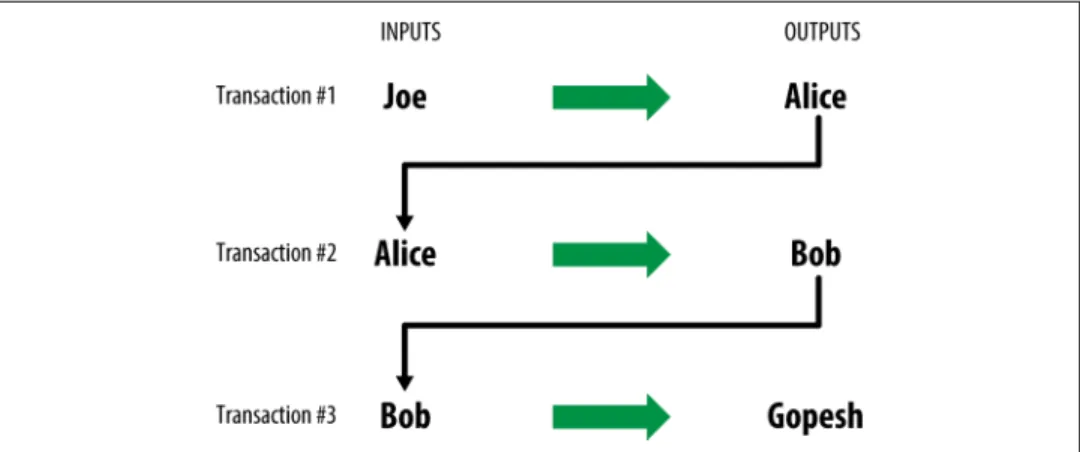
Bitcoin Core: The Reference Implementation
Bitcoin Development Environment
Compiling Bitcoin Core from the Source Code
Alternatively, you can use the git command line to create a local copy of the source code on your system. When the git clone operation is complete, you will have a complete local copy of the source code repository in the bitcoin directory.
Selecting a Bitcoin Core Release
In the examples, when you see text after a $ symbol, do not type the $ symbol, but type the command immediately. You may need to install the git command or a graphical user interface for git on your operating system if you don't already have it.
Coniguring the Bitcoin Core Build
Chief among these is the setup script, which offers a number of different options for customizing the build process. If all went well, the setup command will finish by creating the custom build scripts that will allow us to compile bitcoind.
Building the Bitcoin Core Executables
Running a Bitcoin Core Node
If you do not wish to rely on any third party to process or validate your transaction. If you are reading this book and are interested in developing bitcoin software, you should run your own node.
Running Bitcoin Core for the First Time
Coniguring the Bitcoin Core Node
In addition to the rpcuser and rpcpassword options, Bitcoin Core offers more than 100 configuration options that change the behavior of the network node, the storage of the blockchain, and many other aspects of its operation. Use this on nodes with limited memory to reduce the size of the transaction pool in memory.
Transaction Database Index and txindex Option
No rpc password set - use random cookie authentication Generated RPC authentication cookie /tmp/bitcoin/.cookie HTTP: starting 4 worker threads. You will find a number of sample startup scripts for various operating systems in bitcoin's source directory under con‐.
Bitcoin Core Application Programming Interface (API)
To run Bitcoin Core in the background as a process, start it with the daemon option, as bitcoind -daemon. The result is a block hash, which is described in more detail in the following chapters.
Getting Information on the Bitcoin Core Client Status
Below this data we see the version numbers for the bitcoin software client (110200) and bit‐. We see the current block height, showing us how many blocks are known by this client (396367).
Exploring and Decoding Transactions
Absence of a transaction hash in the blockchain does not mean that the transaction was not processed. In this case, we see that the transaction that credited our new address with 15 millibits used one input and generated two outputs.
Exploring Blocks
The transaction decode shows all the components of this transaction, including the transaction inputs and outputs. The input for this transaction was the output of a previously confirmed transaction (shown as the vin txid starting with 7957a35fe).
Using Bitcoin Core’s Programmatic Interface
The Python script in Example 3-3 makes a simple getinfo call and prints the block parameter from the data returned by Bitcoin Core. Not a spectacular result, but it demonstrates the basic use of the library as a simplified interface to Bitcoin Core's JSON-RPC API.
Alternative Clients, Libraries, and Toolkits
Element tx contains the list of all transaction IDs in the block transactions = block['tx']. Compare that to the amount reported by a block explorer site by searching for the block hash or height.
JavaScript
Java
Python
Ruby
Rust
Objective-C
Keys, Addresses
We will look at the different encryption formats used to represent private and public keys, addresses, and script addresses. Finally, we'll look at advanced uses of keys and addresses: vanity, multisignature and script addresses, and paper wallets.
Public Key Cryptography and Cryptocurrency
Think of the public key as similar to a bank account number and the private key as similar to the secret PIN code or signature on a check that gives control over the account. However, the public key can be calculated from the private key, so that only pri‐ is stored.
Private and Public Keys
In most wallet implementations, the private and public keys are conveniently stored together as a key pair.
Why Use Asymmetric Cryptography (Public/Private Keys)?
Private Keys
The dumpprivkey command opens the wallet and extracts the private key that was generated with the getnewaddress command. The command simply exposes the private key that the wallet already knows and has been gen‐.
Public Keys
Elliptic Curve Cryptography Explained
In the mathematics of the elliptic curve, there is a point called the "point at infinity" that roughly corresponds. Given two points P1 and P2 on the elliptic curve, there exists a third point P3 = P1 + P2, also on the elliptic curve.
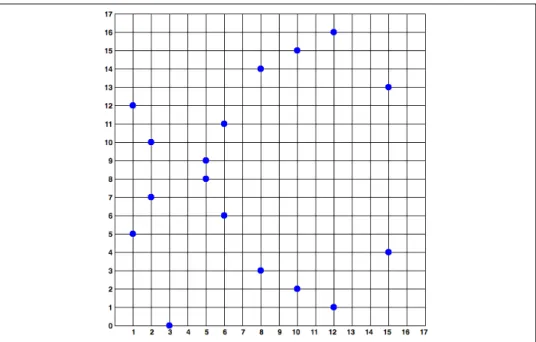
Generating a Public Key
To visualize the multiplication of a point by an integer, we will use the simplest elliptic curve over the real numbers - remember, the math is the same. Elliptic curve cryptography: visualizing the multiplication of a point G by an integer k on an elliptic curve.
Bitcoin Addresses
The bitcoin address is derived from the public key using one-way encryption. The algorithms used to create a bitcoin address from a public key are the Secure Hash Algorithm (SHA) and the RACE Integrity Primitives Evaluation Message Digest (RIPEMD), specifically SHA256 and RIPEMD160.
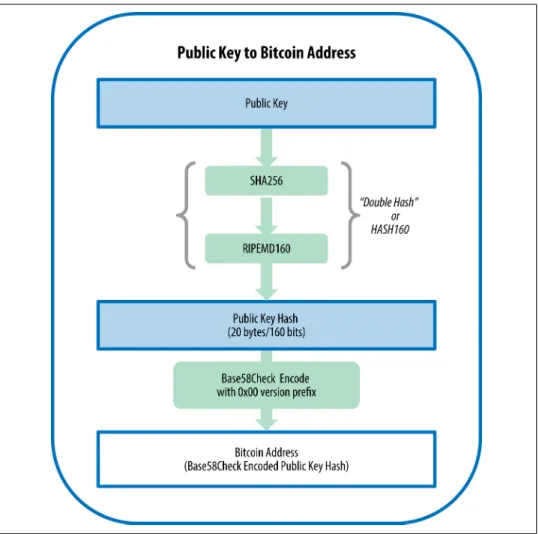
Key Formats
This is because the private key has an added suffix of one byte (shown as 01 in hex in Table 4-4), which implies that the private key is from a newer wallet and should only be used to generate public keys compressed. When you export private keys from a new wallet that implements compressed public keys, the WIF is modified, with a one-byte suffix of 01 added to the private key.
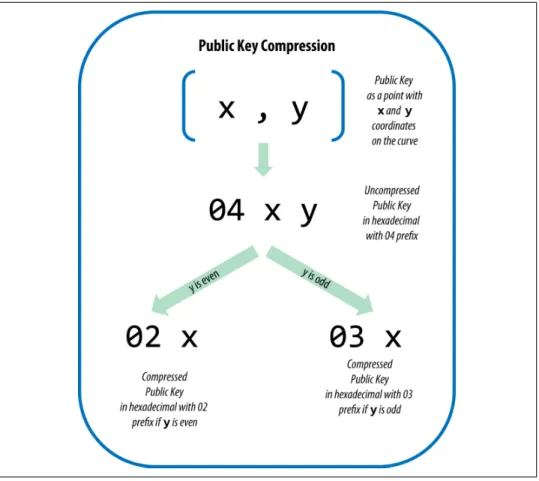
Implementing Keys and Addresses in Python
Generate a WIF format from a compressed private key (compressed WIF) wif_compressed_private_key = bitcoin.encode_privkey(. Multiply the G point of the EC generator by the private key to get the public key point public_key = bitcoin.fast_multiply(bitcoin.G, decoded_private_key).
Advanced Keys and Addresses
Encrypted Private Keys (BIP-38)
Many wallet applications now recognize BIP-38 encrypted private keys and will prompt the user for a passphrase to decrypt and enter the key. The most common use case for BIP-38 encrypted keys is for paper wallets that can be used to back up private keys on a piece of paper.
Pay-to-Script Hash (P2SH) and Multisig Addresses
The result of the BIP-38 encryption scheme is a Base58Check-encoded encrypted private key that begins with the prefix 6P. Third-party applications, such as the awesome browser-based Bit Address (Wallet Details tab), can be used to decrypt BIP-38 keys.
Vanity Addresses
Another way to find a vanity address is to outsource the work to a cluster of vanity mines. To run the example, run the vanity-miner executable with no parameters (see Example 4-10) and it will try to find a vanity address that starts with "1kid.".
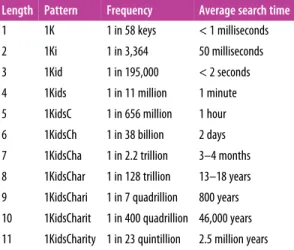
Paper Wallets
The keys printed on the paper wallet are protected by a password that the owner has memorized. An example of a paper wallet from bitcoinpaperwallet.com with a private key on a folding lap.
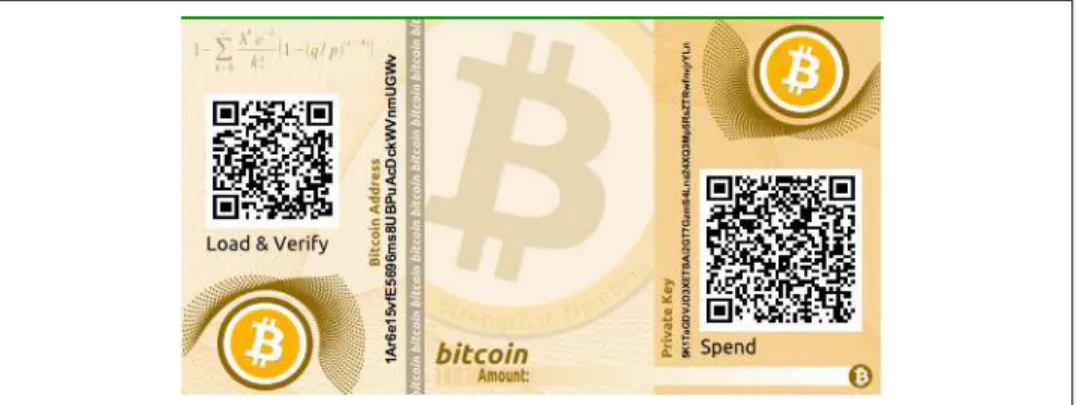
Wallets
Wallet Technology Overview
The second type of wallet is a deterministic wallet, where all the keys are derived from a single master key, known as the seed. All the keys in this type of wallet are related to each other and can be regenerated if one has the original seed.
Nondeterministic (Random) Wallets
This type of wallet is also known as a JBOK wallet from the phrase "Just a Bunch Of Keys.". For ease of use, the seeds are coded as English words, also known as mnemonic code words.
Deterministic (Seeded) Wallets
HD Wallets (BIP-32/BIP-44)
Seeds and Mnemonic Codes (BIP-39)
Wallet Best Practices
Using a Bitcoin Wallet
Wallet Technology Details
Mnemonic Code Words (BIP-39)
Mnemonic words are automatically generated by the wallet using the standardized process defined in BIP-39. The BIP-39 standard allows the use of an optional passphrase when deriving the seed.
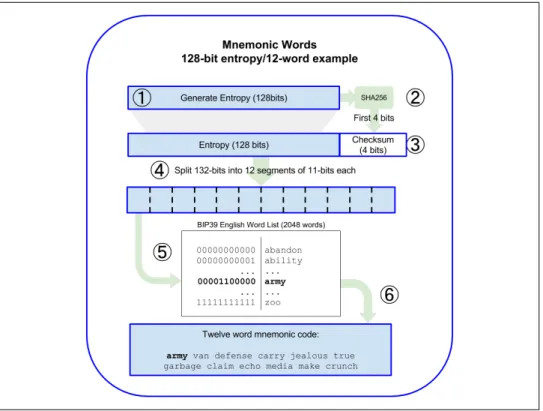
Creating an HD Wallet from the Seed
The extended public key can therefore be used to derive all public keys (and only public keys) in this branch of the HD wallet structure. You can use this shortcut to create highly secure public-key-only deployments where the server or application has a copy of the extended public key and no private keys.
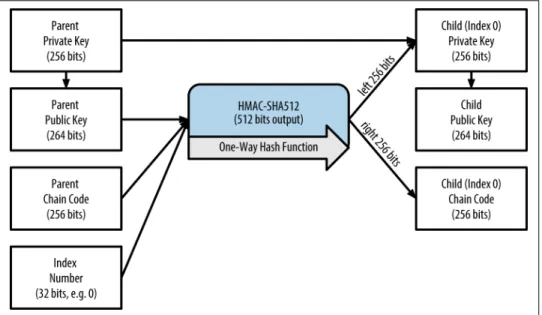
Using an Extended Public Key on a Web Store
The amplified derivation function uses the parent's private key to derive the underlying chain code, instead of the parent's public key. This is to enable this level of the tree to export extended public keys for use in a non-secure environment.
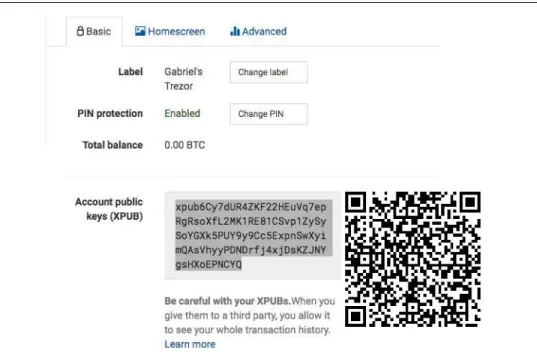
Transactions
Transactions in Detail
Transactions—Behind the Scenes
Transaction Outputs and Inputs
If a UTXO is greater than the desired value of a transaction, it must still be consumed in its entirety and change must be generated in the transaction. This special coinbase transaction does not consume UTXO; instead, it has a special type of entry, the 'coinbase'. This is how bit.
Transaction Outputs
The process of converting from the byte stream representation of a transaction to the internal structure of the library's data representation is called deserialization or transaction parsing. The process of converting to a byte stream for network transmission, hashing, or disk storage is called serialization.

Transaction Inputs
But without getting the UTXO referenced in the entry, you don't know their value. As with the outputs, let's see if we can find the inputs from Alice's transaction in serialized format.

Transaction Fees
Transaction fees are collected by the miner who mines the block that records the transaction on the blockchain. Transaction fees are calculated based on the size of the transaction in kilobytes, not the value of the transaction in bitcoin.
Adding Fees to Transactions
If you forget to add a change output in a manually composed transaction, you will pay the change as a transaction fee. Eugenia's wallet app will calculate the appropriate fee by measuring the transaction size and multiplying it by the fee per kilobyte.
Transaction Scripts and Script Language
Turing Incompleteness
Stateless Veriication
Script Construction (Lock + Unlock)
When script execution ends, you should be left with the value TRUE on the stack. If the result of executing the lock script with stack data copied from the unlock script is "TRUE", then the unlock script has succeeded in solving the problem.

Pay-to-Public-Key-Hash (P2PKH)
If the unlock script executes without error (eg it has no "dangling" operators left), the main stack (not the alternate stack) is copied and the lock script is exe‐. When executed, this combined script will evaluate to TRUE if, and only if, the unlock script matches the conditions specified by the lock script.
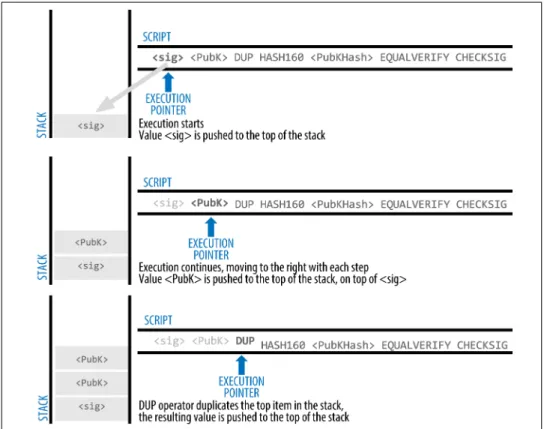
Digital Signatures (ECDSA)
First, the signature proves that the owner of the private key, which is implied to be the owner of the funds, has authorized the spending of these funds. Third, the signature proves that the transaction (or particular parts of the transaction) have not been modified and cannot be modified by anyone after it has been signed.
Wikipedia’s Deinition of a “Digital Signature”
How Digital Signatures Work
This signature is a serialized stream of bytes of R and S values produced by Alice's wallet to prove that she owns the private key authorized to consume this output. The significant numbers are R and S; the rest of the data is part of the DER encoding scheme.
Verifying the Signature
Signature Hash Types (SIGHASH)
Signature ALL 0x01 applies to all inputs and outputs NONE 0x02 Signature applies to all inputs, none of the outputs. If not enough inputs are collected to reach the output value, the transaction is void.

ECDSA Math
This temporary key pair is used in the calculation of the R and S values, after a transformation involving the signing private key and the transaction hash. The R-value of the digital signature is then the x-coordinate of the short-lived public key P.
The Importance of Randomness in Signatures
Bitcoin Addresses, Balances, and Other Abstractions
Finally, the blockchain explorer recoded that public key hash with Base58Check to produce and display bitcoin addresses. From the UTXO pool, the blockchain explorer summarizes the value of all unspent expenses.
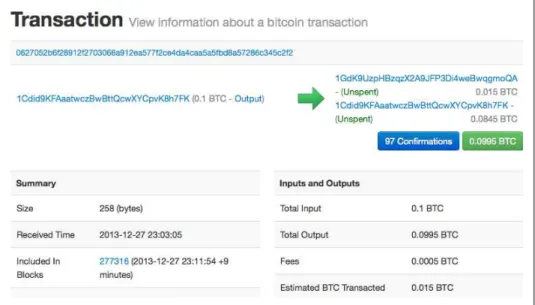
Advanced Transactions and Scripting
Multisignature
In this case, the condition is whether the decryption script has a valid signature of the two private keys that match two of the three public keys set as an encumbrance. However, because of the error, CHECKMULTISIG will display an extra value or one more value than expected.
Pay-to-Script-Hash (P2SH)
Redeem Script 2 PubKey1 PubKey2 PubKey3 PubKey4 PubKey5 5 CHECKMULTISIG Script Lock HASH160 <20 byte hash value of redemption script> EQUAL. Instead, there is only a hash value in the lock script, and the cashout script itself is present.
P2SH Addresses
Instead of "pay to this 5-key multisignature script," the P2SH equivalent transaction is "pay to a script with this hash." A customer making a payment to Mohammed's company only needs to include this much shorter closing letter with his payment. P2SH addresses hide all the complexity, so the person making a payment doesn't see the script.
Beneits of P2SH
Now Mohammed can give this "address" to his customers and they can use almost any bitcoin wallet to make a simple payment as if it were a bitcoin address.
Redeem Script and Validation
P2SH lock scripts contain the hash of a redemption script, which provides no clues about the contents of the redemption script itself. The P2SH transaction is considered valid and accepted even if the redemption script is invalid.
Data Recording Output (RETURN)
Note that there is no "unlock script" corresponding to RETURN that can be used to "consume" the output of RETURN. The point of RETURN is that you cannot spend the money locked in this exit, so there is no need to keep it in the UTXO pool as potentially spendable - RETURN is provably unspent.
Timelocks
Transaction Locktime (nLocktime)
The only guarantee is that Bob will not be able to pay it off before 3 months have passed. To achieve such a guarantee, the time lock constraint must be set on the UTXO itself and be part of the lock script, rather than the transaction.
Check Lock Time Verify (CLTV)
To close it at a time, say 3 months from now, the transaction would be a P2SH trans‐. It uses its signature and public key in that entry's unlock script and sets the transaction nLocktime to be equal to or greater than the duration in Alice's CHECKLOCKTIMEVERIFY array.
Relative Timelocks
Relative Timelocks with nSequence
The nSequence value is specified in blocks or seconds, but in a slightly different format than we saw in nLocktime. If the type flag is not set, the nSequence value is interpreted as the number of blocks.
Relative Timelocks with CSV
Median-Time-Past
Median-Time-Past is calculated by taking the timestamps of the last 11 blocks and finding the median. The consensus time calculated by Median-Time-Past is always approximately one hour behind the wall clock.
Timelock Defense Against Fee Sniping
Median-Time-Past changes the implementation of timing calculations for nLocktime, CLTV, nSequence and CSV. Essentially, they have the option to pull transactions from the "present" to the rewritten "past" when they recreate block #100,000.
Scripts with Flow Control (Conditional Clauses)
To prevent fee sniping, when Bitcoin Core creates transactions, it uses nLocktime to limit them to the "next block" by default. But under a block fork attack, miners would not be able to pull high-fee transactions from the mempool because all those transactions would be time-limited to block #100,001.
Conditional Clauses with VERIFY Opcodes
If, on the other hand, we want to have more than one execution path (flow control), then we need an IF…ELSE flow control clause. An opcode like EQUAL will push the result (TRUE/FALSE) onto the stack and leave it there for evaluation by subsequent opcodes.
Using Flow Control in Scripts
